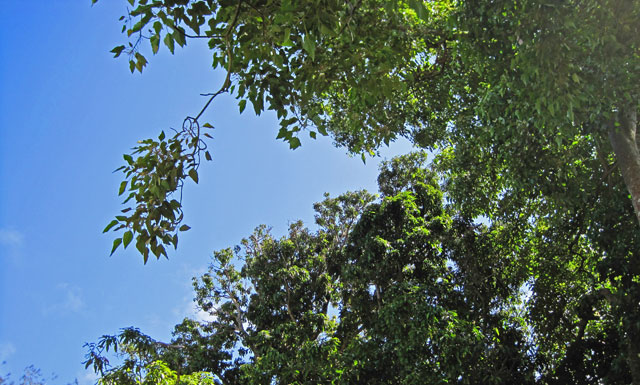
Through the process of photosynthesis, the leaves of trees take CO2 out of the atmosphere and convert it to carbon (in the form of wood) and oxygen. A healthy tree stores about 13 pounds of carbon dioxide annually.
Three of the Hi'ilani site's twelve acres are being transformed from marginal grassland to dense Hawaiian rainforest with multiple carbon sequestering canopies.
One acre of grassland has a yearly capacity to store 1 ton of carbon dioxide. One acre of forest captures 3.6 tons of carbon dioxide. Through the conversion of grasslands into forest, carbon sequestration is increased by 2.6 tons per year per acre. For three acres this adds up to an increase of 7.8 tons per year.
One hundred tons of concrete were used in construction. New concrete additives reduced the amount of portland cement used in the Hi'ilani concrete mix to 14%. (To create a ton of portland cement, a ton of CO2 is released.) As a result, the amount of CO2 released during cement manufacturing was limited to 14 tons. Crew travel, material shipping, and onsite construction trucks and machinery added an additional 30 tons of CO2.
The expected life of a SCIP building is measured over centuries, not decades. Over it's lifetime, the Hi'ilani EcoHouse project will capture enough carbon from the atmosphere to more than balance its own emissions.
